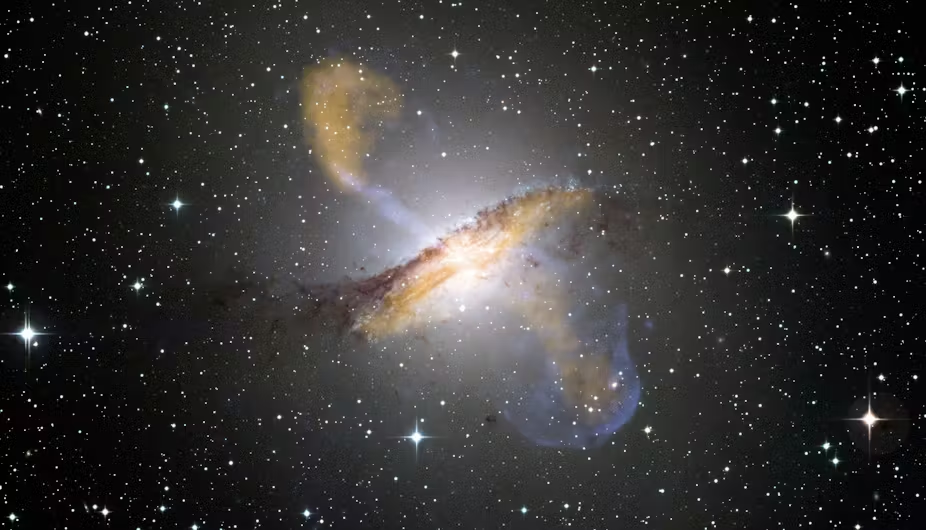
Egg-shaped galaxies could be aligned with central black holes: Study
text_fieldsThe active galaxy Centaurus A, with jets emanating from the central black hole; NASA
A new study reveals a surprising connection between supermassive black holes and the shape of their host galaxies. Black holes, which are generally spherical in shape and black in color, are classified mainly by their mass. Some, called stellar-mass black holes, are as heavy as a star like our Sun, while others, known as supermassive black holes, can weigh millions of times more. While stellar-mass black holes can be scattered across a galaxy, supermassive ones are typically located at the core of galaxies. Despite their immense mass, supermassive black holes account for only about 1% of the galaxy’s total mass and have a size that’s a fraction of the galaxy itself.
In an unexpected finding published in 'Nature Astronomy', researchers David Parkinson from The University of Queensland and Jeffrey Hodgson from Sejong University in Seoul discovered that the direction of the jets emitted by supermassive black holes is often aligned with the shape of the host galaxy, especially those in elliptical form. These jets, produced when gas and dust fall into the black hole and form a hot accretion disk, travel at nearly the speed of light and can be observed across vast distances. The phenomenon, called a quasar when the black hole "lights up," is a powerful source of radiation that astronomers can detect using radio telescopes. Using very long baseline interferometry (VLBI), a technique that links multiple radio telescopes worldwide to form an Earth-sized observational device, has allowed astronomers to study these jets with incredible precision.
Quasar jets can stretch millions of light years and are almost always found in elliptical galaxies. When astronomers use VLBI to study these jets, they can observe their alignment relative to the host galaxy’s shape. The study found that the direction of the jets often aligns with the shorter axis of the galaxy's elliptical form. This alignment is statistically significant, which is surprising given the disparity in size between the black hole and the galaxy. The jets themselves measure just a few light-years in length, while the host galaxies can be hundreds of thousands or even millions of light-years across. Unexpectedly, such a small object could have such an influence on the much larger structure of the galaxy.
This discovery raises questions about how galaxies form and how black holes might influence their development. Elliptical galaxies, often shaped like three-dimensional egg-shaped blobs, are formed when spiral galaxies collide and merge. The merger process seems to trigger quasar activity, although the exact relationship between the two is still not fully understood. This is especially intriguing in light of recent discoveries by the James Webb Space Telescope, which identified highly massive quasars with supermassive black holes that formed earlier in the universe than previously thought. These findings suggest that our current understanding of how galaxies and black holes evolve might need to be revisited, as the influence of supermassive black holes may play a larger role in galaxy formation than we previously realized.
With PTI inputs























